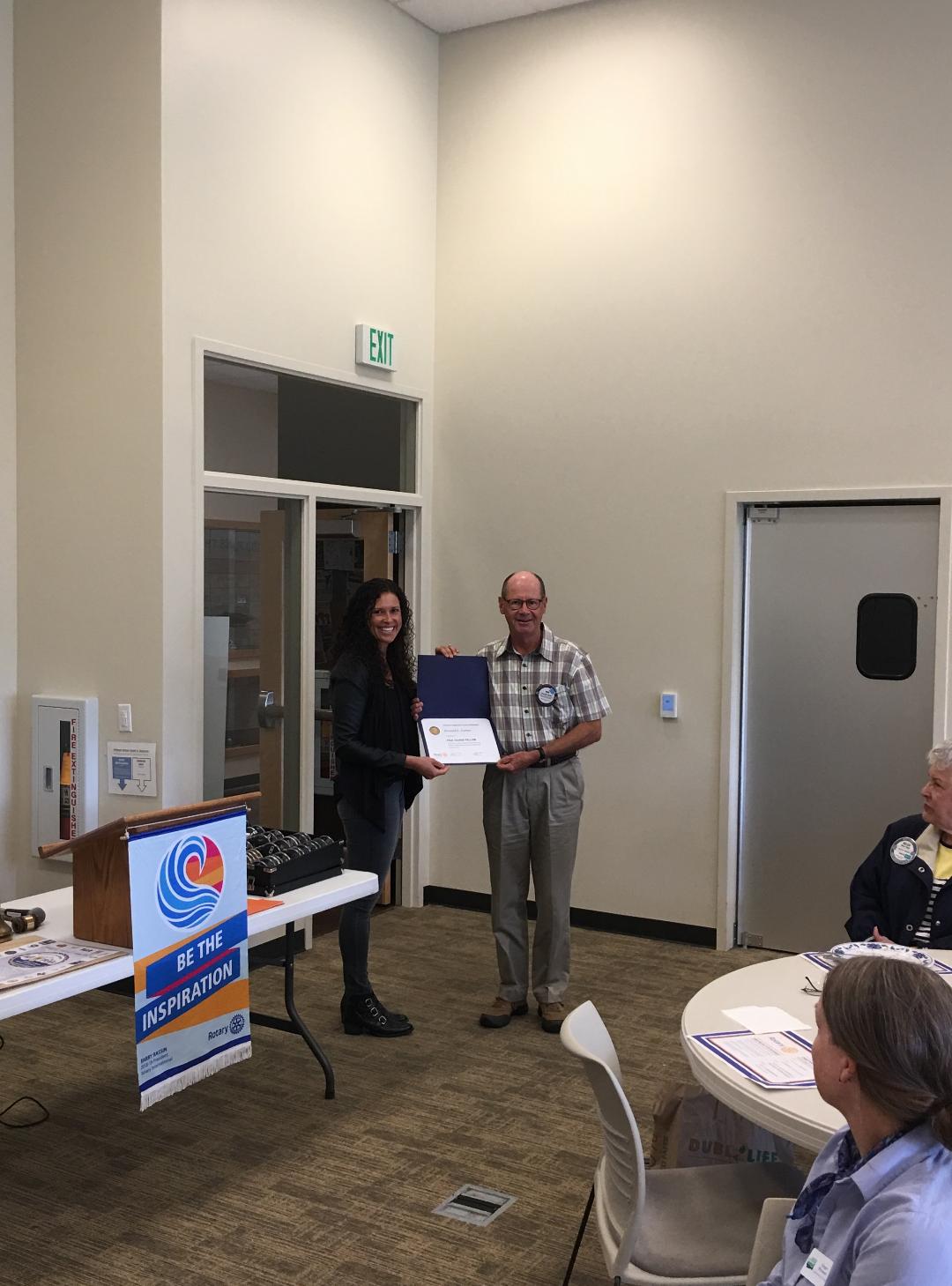Ginger Wireman, from the Washington State Department of Ecology, spoke to Kingston North Kitsap Rotarians at their May 29 meeting. Her subject was Cleanup Progress and Challenges at Hanford, the southeast Washington nuclear site of the Manhattan project, which developed the bomb that leveled Nagasaki, Japan to end the Pacific war during World War II. Hanford was established in 1942. It was selected because there was a lot of available land, near water, with bountiful electricity. Near Richland, the Columbia river, and Grand Coulee dam. Tons of waste resulted from WWII and Cold War nuclear production by the nine reactors at Hanford. Cleanup began with a three-party (US Department of Energy, Environmental Protection Agency, and Washington State Department of Ecology) in 1989. To date there is no more production of plutonium, plutonium has been moved offsite, groundwater pump and treatment is shrinking contaminated plumes, the river shore is cleaned up, seven reactors have been mothballed, the waste treatment plant is 75% complete, and waste has been retrieved from the first single-shell tank farm. Good progress has been made on the cleanup, but Ginger shared much is left to accomplish.
Rotarians were asked to “turn a brush” next week to help get Kingston’s Coffee Oasis ready for its grand opening June 8. Beginning next Tuesday, June 4, materials will be available. All that’s needed is labor to apply them, something Rotarians are pretty good at. Contact Chris Gilbreath for info on how you can help. A work party note will go out shortly.
